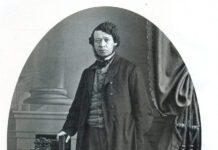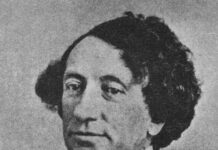As the Maritime delegates arrived in Quebec City in October, 1864, ready to continue the talks that had begun in Charlottetown, they were in a very positive frame of mind. Many had brought wives and daughters, eager to continue the parallel round of dances and receptions which had marked the earlier conference in PEI. But the happy and optimistic bubble in which they seem to have settled would experience a sharp jolt when the real world of the American Civil War intruded once again and underlines the very practical considerations which lay behind the plans for Confederation.
Although the Southern Confederacy had suffered a serious setback at Gettysburg in July, 1863, it was still believed in British America that the Union Government would never be able to finally defeat the Confederate States. One of many writers and journalists to dismiss the idea in 1864 stated: “Who is there, outside of the Northern States, who can doubt that it is irrevocably dissolved?” The fear, expressed with equal conviction, was that, whether they won the war or not, the United States “will emerge..chafed, angry, and entertaining feelings of mortal hatred and revenge”. And this anger would be directed against British America, where Southern sympathisers and agents were active.
The Trent and Chesapeake affairs had shown how easily and quickly the sparks of war could be ignited. While the delegates were meeting in Charlottetown, Southern agents had seized a ship at Amherstburg on the Canadian side of the Detroit River, with the intention of using it to seize an American gunship, the USS Michigan. The two ships would then force the release of Southern prisoners being held on Johnson Island in Lake Erie. The plan failed, but yet another attack on the US from Canada was to cause far more serious and lasting consequences, even as the conference at Quebec was meeting.
On October 19, twenty-five Southern agents who had infiltrated from north of the border gathered in the town of St. Albans, Vermont. They held the townsfolk hostage, raided three banks, and then escaped on horseback across the border into Canada, with around $200,000 in cash, a huge sum in 1864. There was tremendous outrage in American newspapers and political circles, especially when it was learned that two of the raiders had actually been apprehended by pursuing American troops inside Canada, but had been freed by Canadian militia.
American papers demanded Canada return the raiders at once, and American General Dix ordered his troops to pursue Southerners across the border. He also wanted passports to be required of British Americans crossing the border, but both of these demands were rejected by Washington. American politicians found amore effective way to punish Canadians: they gave notice that the free trade agreement between British America and the United States, known as the Reciprocity Treaty, which was up for renewal that year. Other economic steps were taken which illustrated how dependent Canada was on access to and through the United States.
Most of the raiders were taken into custody in Canada, along with just $19,000 of the stolen money, and put on trial in December. To add fuel to the flames, they were released on a technicality, the money was returned to them, and they promptly disappeared. This was, perhaps, as close as British America had come to war with the United States since 1815. Washington ordered six new ships to be built on the Great Lakes, Reciprocity was not renewed, lumber exports to the United States were put under huge tariffs, passports were required of Canadians, and Northern feeling was enraged against British America which was seen, yet again, to sympathise with the Southern Confederacy and wink at their activities on British American soil. General Dix demanded the right of cross-border pursuit yet again. The three government of the U.S., Canada and Britain did manage to diffuse the crisis eventually, but lasting damage had been done.
More importantly, perhaps, both the Imperial and British American government realised once more how vital Confederation was to the future security and stability of British America. The Colonial Office in London instructed the various Lieutenant Governors in North American to do everything in their power to push through the scheme of union for all of British America. External threats had been added to internal divisions and political deadlock to make Confederation the goal on all sides, it seemed. What was needed was for the delegates in Quebec to hammer out an arrangement that would work. This would take a revolution in thinking, and some imaginative constitutional structures to make it happen.








